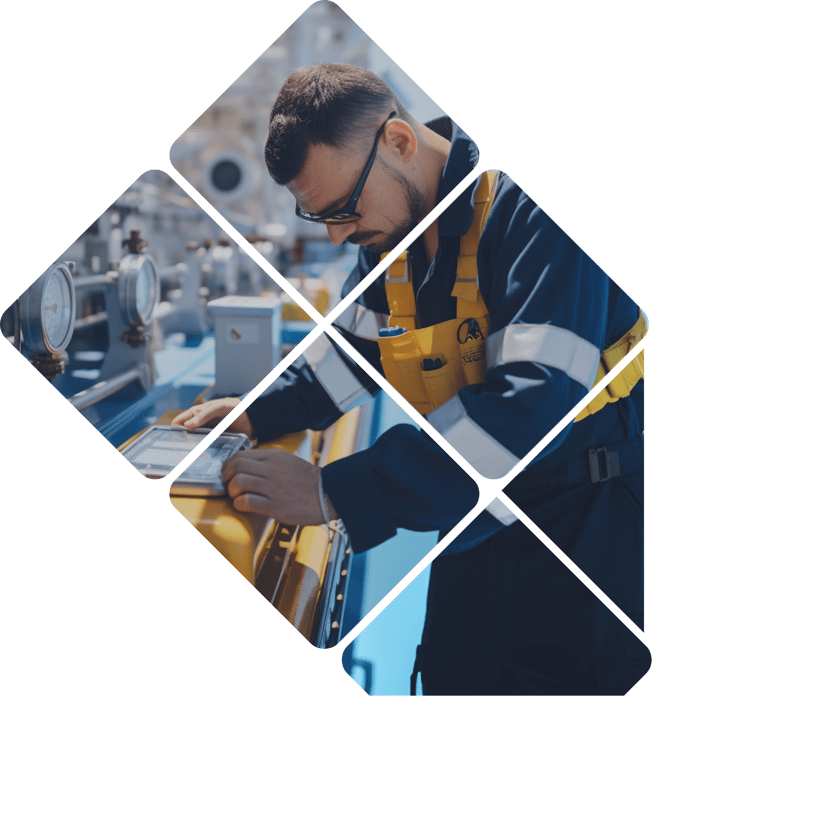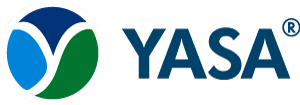Launching a one-stop portal for crew training
The new myBruusgaard portal combines training, testing, and certification into one...

Gas detection logistics can be a costly headache – unless you have a skilled support team to handle it.
Logistics and procurement support is among the pillars of The Bruusgaard System. True to our promise of streamlining every aspect of your gas detection capability, our support team keeps you compliant and cost-effective at all times.
One of the most common scenarios we encounter is crews realising that one or more calibration gas cylinders are past or close to expiry date. This typically results in the following response:
This is an unfavorable approach to gas safety. Even if a supplier can be found within close proximity – which is certainly not always the case – the available goods are often incompatible with the vessel’s existing equipment. Not least, express delivery to a remote location does not come cheap.
Did you know?Vessels are required to maintain and service all gas detection equipment on board – even surplus ones.
As a member of our support program, you can rest assured that we will keep a close tab on your gas detection stock and re-supply based on your actual need, before you need it. Here’s an outline of our process:
Logistics Support in The Bruusgaard System |
||
|
Step |
What we do |
Phase |
|
1 |
Instrument report: We assess your vessel and list all the gas detection equipment you need (and do not need). |
Start-up phase |
|
2 |
Purchase order: We draft a purchase order based on the instrument report. |
|
|
3 |
Supply: If you confirm the purchase order, we supply the goods accordingly. |
|
|
4 |
Instrument report update: As soon as your vessel is equipped, we update your instrument report to reflect your current gas detection stock. |
Operations phase (cyclical) |
|
5 |
Monitor and replenish: You report the use of consumables and we re-supply as needed. We also keep track of expiry dates for unused spares (spangas, sensors, tubes etc.) and notify you when it’s time to replenish your stock. This happens every 1–2 years. The notification comes with a corresponding purchase order that you can amend or confirm. We also optimise delivery frequencies to reduce shipping fees. Steps 4 through 5 are recurrent. |
|
Aina Eriksen, our Sales Coordinator Manager, describes how this works in practice:
– When you are enrolled in our support program, you will have an open line to our support team. We process your day-to-day inquiries and keep track of your instrument report, which includes monitoring expiry dates.
She continues:
– Purchasers have a tendency to over-equip their vessels, so I think many of our customers get a little surprised when we advise them not to place an order. But that is part of the value we provide – our job is to make sure you have all the equipment you need – nothing more, nothing less. It is how we are able to save our customers thousands of dollars per ship, annually.
“I think many of our customers get a little surprised whenever we advise them not to place an order.”
She stresses that anyone can purchase gas detection equipment from Bruusgaard. However, only customers of The Bruusgaard System enjoy the full benefits of cost optimisation and proactive support.
Ms. Eriksen also explains how the support team keeps the customers on top of expenditures.
– Every October or November, we send our customers a budget estimate for the following year. Some units need replacing annually, some biannually, so costs may vary. Forecasting is crucial: We optimise for as few shipments as possible, as every instance triggers fees and charges – in particular when it comes to dangerous goods. We do everything we can so that our customers avoid paying ten times their goods’ worth in shipping fees, she says.
Our customer support team is responsible for replenishing all gas detection consumables. Below is an overview of what they are, and how often they need replacing.
|
Gas Detection Consumables |
|
|
Consumables |
Typical replacement / |
|
Annually |
|
|
Bi-annually |
|
|
Annually |
|
|
Bi-annually |
|
|
Training material |
If lost or outdated |
While some ships operate the same routes throughout their lifetimes, others operate in the spot market with unpredictable itineraries. Both categories require precision logistics, but our perhaps greatest asset is our ability to service the latter.
On account of our local hubs (see the illustration below), we’re able to supply most ports within 1–7 days. The actual shipment is usually on the faster side of that interval, but dangerous goods can be held at customs. According to Ms. Eriksen, dangerous goods are a headache for crews and purchasers.
– The crew may get hold of calibration gases from a local supplier, but chances are that what they are able to get is incompatible with whatever auxiliary equipment they have on board, such as regulators and valves. The cylinders may also have short shelf lives and the mixtures can be off. Luckily, we are able to ship to most ports within only a few days’ notice, she explains.
Gas detection consumables are critical to the ship’s operations. If a vessel is unable to calibrate its gas detection equipment, it is incompliant and can therefore be barred from setting sail. More importantly, it can jeopardize crew safety.
This underlines the importance of a proactive approach to gas detection. To our knowledge, no system matches the Bruusgaard System – with Aina Eriksen and her colleagues at the rudder – when it comes to support and logistics.

Post by Martin Bruusgaard
Similar subjects
Onboard Detection Gas Detection The Bruusgaard System Gas Safety
Never miss out on industry news, reviews and articles.
The new myBruusgaard portal combines training, testing, and certification into one...
Compliant CO₂ testing starts with proper equipment and operational routines.
The most important shift is clear: atmospheric testing must go beyond oxygen.
Optimal safety. Minimal effort.

Providing solutions for




